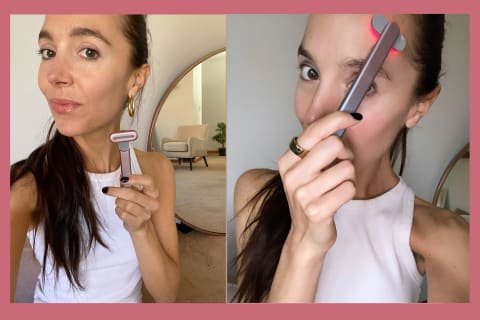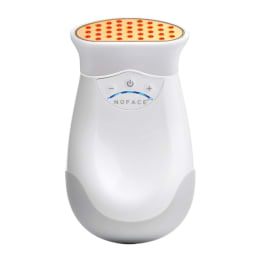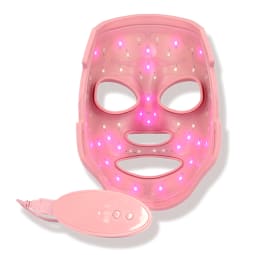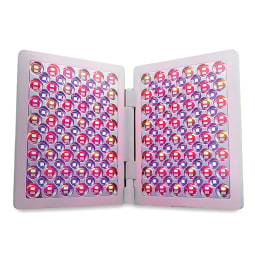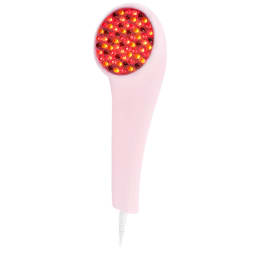Before, these LED light therapy tools were typically kept in dermatologists’ or estheticians’ offices during treatments or facials. Now, just like everything else it seems, they’re hitting the mainstream market for at-home use. But just because you can get your hands on professional-grade light therapy tools doesn’t mean every item for sale is actually up to par. In fact, experts warn that there are many less-than-quality options that have flooded the web, so it’s important to make sure you’re purchasing one that comes recommended. Now, a fair warning that these come with a pretty price tag—but given these are technically professional devices, a higher cost just comes with the territory. That’s why LED therapy is typically a part of a facial, working alongside the other treatments and products used during the treatment. This is because the wavelengths of the LED light technology help ingredients penetrate deeper into the dermis for a more effective regimen and results. There are a variety of LED lights from blue to yellow to green. The one we’re highlighting today is red light therapy, which exposes bodily tissues to red and near-infrared light between the wavelengths of 660 nm and 890 nm with either low-level lasers or red LED lights to stimulate collagen to improve fine lines and wrinkles and help heal scars and wounds. This results in a smoother, clearer, younger complexion. In fact, one study found that patients receiving red light therapy twice a week for 30 total sessions experienced improved skin tone2, skin smoothness, and collagen density. All LED therapy is best done by professionals thanks to their professional-grade tools and extensive training. Not to mention, there are lots of questionable at-home red light therapy tools looking to take advantage of the buzz around red LED light therapy. With that being said, there are also some really great at-home options available for those looking for a more consistent and more affordable routine. If you are looking to partake in LED light therapy at home, we recommend buying from only reputable skin care brands and companies. But to help you sort through all the noise, we rounded up eight of our favorite red light tools. Of course, there are things to keep in mind when using the tools. First and foremost, you should find a quality product (more on that below). Because as experts have explained to us, less-than-stellar options have flooded the market, resulting in a lot of poorly made options in the hands of users. “Unless the LED light is the correct wavelength, it’s not going to do anything; you might as well be using Christmas lights,” says esthetician Natalie Aguilar. Anecdotal accounts reveal that some people find red light therapy to be irritating or bothersome to the eyes, but this can be remedied by wearing goggles. Finally, always follow the instructions from the brand. Esthetician Aneta Zuraw, co-founder of Atelier Beauté, generally advises placing the device panel within 1 inch of the face, but certain manufacturers may have different protocols. “All programs, distance, and time vary per skin condition and device used,” she says. What our tester says: “I firmly believe the Solawave is worth the hype. I personally was shocked by the results the first morning after using my new device, and it’s only gotten more impressive with time. Each use brightens up my dark under-eye circles and eases tension in my face, revealing a less puffy, more sculpted appearance. Over time, I noticed an improvement in fine lines and a more even skin tone overall."— Carleigh Ferrante, commerce editor Our high standards also come from testing products—many, many products. Our editors and writers rigorously test and research the products featured in our roundups to offer you the best, most informed recommendations. When we write reviews, you can trust we spend quality time with the formulas: We don’t simply rave about products we’ve slathered on the back of our hand. We endorse products we’ve tried and loved. Learn more about our testing process and clean beauty standards here.












